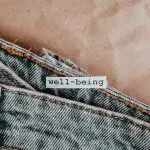Absolutely, chiffon is super lightweight! Whether it's made from silk, polyester, or even a rare cotton blend, chiffon always has this airy, delicate feel to it. It's much lighter than other fabrics like denim or cotton, making it perfect for those flowy summer dresses and elegant blouses. What's great is that despite being so light, it still drapes beautifully and packs easily without wrinkling – talk about a travel-friendly fabric! There's a whole array of chiffon types, each offering that featherweight quality with slight variations. Stick around to discover more on how each type of chiffon could suit your needs!
Table of Contents
Key Takeaways
- Chiffon is a sheer, lightweight fabric ideal for airy summer outfits.
- It is lighter than cotton, offering a featherweight quality suitable for warm climates.
- The fabric's loose and slightly rough weave contributes to its airy nature.
- Chiffon is lighter compared to heavier fabrics like denim and wool.
- Its delicate and airy feel makes it versatile for breezy dresses, scarves, and bridal wear.
Understanding Chiffon Fabric
Chiffon is a sheer, lightweight fabric often used in elegant clothing like evening dresses and scarves. Let's dive into what exactly makes up this beloved material. Typically, chiffon is made from silk, nylon, or polyester. The magic behind its delicate, airy feel lies in how it's woven. The threads are twisted tightly, then woven in a mesh-like pattern. This unique process gives chiffon that slight puckering on its surface, which not only adds to its transparency but also its stretchiness.
Handling chiffon can be tricky because it's so delicate. When you're sewing with it, you've gotta be super careful since it frays easily and can slip through your fingers like water. That's why it's important to use fine needles and a lot of patience.
I've found that despite its challenges, working with chiffon is worth the effort. It drapes beautifully, making it a top choice for flowy, ethereal designs. Whether it's a breezy summer dress or a soft, graceful scarf, chiffon adds a touch of elegance that's hard to match with heavier fabrics. So, mastering chiffon not only elevates your sewing game but also expands your creative repertoire in making lightweight, sophisticated garments.
Chiffon's Weight Compared
Now let's compare how lightweight chiffon is to other common fabrics used in fashion. I've always appreciated chiffon for its breezy, light feel, which makes it a go-to for those flowy, elegant dresses and scarves. When you stack it up against something like denim or wool, chiffon is definitely on the featherweight end of the scale. Denim and wool are robust, heavier fabrics that serve their purpose well in colder weather or for hard-wearing clothing, but they don't have the same light-as-air quality that chiffon offers.
Compared to cotton, which is quite versatile, chiffon is still lighter, making it perfect for those airy summer outfits. Cotton can vary in weight depending on how it's woven, but it generally provides more warmth and structure than chiffon. Then there's silk, which shares some similarities with chiffon in terms of softness and weight. However, chiffon is often airier than silk, primarily because of its loose and slightly rough weave that feels lighter on the skin.
Types of Chiffon Materials
I often encounter several different types of chiffon materials when shopping for fabrics. Let me break them down for you.
First, there's silk chiffon, which is the most traditional form. It's super luxurious and has a slight shimmer that makes it perfect for fancy dresses or scarves.
Then, there's polyester chiffon. This one is way more affordable and durable. It's great for everyday wear because it handles washing better than silk.
Another variant you might come across is cotton chiffon. It's pretty rare but it's there! It combines the lightweight qualities of chiffon with the comfort of cotton. It feels softer against the skin, which is a plus if you're making something like a summer top.
Don't forget about rayon chiffon. This type is a bit heavier and has a fantastic drape, making it ideal for flowy dresses. It blends the properties of natural fibers with the benefits of synthetic ones, striking a nice balance between functionality and beauty.
Each type of chiffon has its own set of characteristics, but they all share that common sheer, airy feel that chiffon is famous for. Depending on your project needs, one might suit you better than the others. So, it's worth exploring your options!
Benefits of Lightweight Chiffon
One of the biggest perks of lightweight chiffon is how effortlessly it enhances comfort and style in warmer climates. When I'm picking out what to wear on a hot day, chiffon is my go-to. It's so airy and breathable, you barely feel like you're wearing anything. That's a godsend when the temperature spikes and you still want to look chic without breaking a sweat.
The thing about chiffon is it's not just about keeping you cool. It's also incredibly forgiving. It drapes beautifully, flattering different body types without clinging. For someone like me who's always on the move, this means I can look polished with minimal effort. Plus, its lightness means it packs like a dream. I can stuff several chiffon outfits into my bag for a trip and they come out looking fresh, not crumpled. That's less time ironing and more time exploring.
What also makes chiffon a winner in my book is its versatility in layering. Even though it's light, layering it adds just enough warmth for a cooler evening without feeling bulky. It's the perfect fabric for transitional weather, adapting as the day shifts.
Common Uses of Chiffon
Chiffon's versatility shines in its various uses, from elegant evening wear to everyday blouses and scarves. I've noticed it's pretty popular in a lot of lightweight summer dresses too. The fabric's light and airy feel makes it perfect for those hot days when you just want something easy and breezy to throw on. Plus, it drapes beautifully, giving any outfit a touch of class.
I've also seen chiffon used a lot in bridal wear. It's not just for the bridesmaids' dresses, but for the veils too. The sheer quality of chiffon adds a soft, romantic look that's perfect for weddings. And let's not forget about accessories! Chiffon makes fantastic scarves, wraps, and even ribbons. It adds a delicate detail to any look without being too heavy or overwhelming.
In the world of home décor, chiffon can be a star as well. Those light, flowing curtains that catch every breeze? Often, they're made of chiffon. It lets just enough light in to brighten a room without sacrificing privacy. So, whether it's fashion or home styling, chiffon is a go-to fabric for adding a light, airy touch to both your wardrobe and your living space.
Caring for Chiffon Garments
Caring for chiffon garments requires a gentle touch to keep them looking their best. This delicate fabric can be a bit tricky to handle, but I've got some tips that'll help you master the care of your chiffon items.
Here's how I keep my chiffon looking flawless:
- Hand Wash or Dry Clean: I usually stick to hand washing with a mild detergent or opt for dry cleaning. Chiffon can lose its shape in a washing machine, so it's better to be safe than sorry!
- Cool Water is Key: Always use cool water when hand washing. Hot water can cause shrinking and fading, and that's definitely not what you want.
- Avoid Wringing: After washing, don't wring out your chiffon. Instead, I gently squeeze out the excess water. Wringing can damage the fibers and ruin the fabric's appearance.
- Air Dry Properly: I always lay my chiffon flat to dry or hang it on a padded hanger. Avoid direct sunlight and heat sources, as they can cause the fabric to fade or even disintegrate.
Just follow these steps, and you'll keep your chiffon garments looking their best for years to come!
Alternatives to Chiffon
If you're not a fan of chiffon or just looking for something a bit different, there are some great alternatives out there.
We'll talk about silk crepe, which has some unique properties, cotton voile which is super comfy and has its own benefits, and organza, perfect for certain uses.
Let's explore what each of these fabrics can offer and see if one might be right for your next project.
Silk Crepe Properties
Silk crepe, a fantastic alternative to chiffon, boasts a uniquely crinkled texture and a wonderfully fluid drape. If you're considering it for your next project, here's why it's a great choice:
- Versatility: It's perfect for dresses, blouses, and even lightweight pants. You can really get creative with it.
- Comfort: It feels amazing against the skin. Trust me, once you try it, you'll understand why it's a favorite.
- Durability: Despite its delicate appearance, silk crepe is surprisingly tough. It holds up well over time.
- Maintenance: It's easier to care for than you might think. A gentle hand wash does the trick!
Cotton Voile Benefits
While silk crepe is a sturdy option, let's now explore cotton voile, another lightweight fabric with its own set of remarkable benefits.
Cotton voile is incredibly breathable, making it perfect for hot weather. It's soft against the skin, which means you won't just look good, you'll feel good too. Plus, it's surprisingly durable for such a light material, and it handles embroidery and embellishments well. This makes it an excellent choice for detailed designs.
It's also less prone to wrinkling compared to other lightweight fabrics, which is a huge plus if you hate ironing like I do. If you're aiming for clothing that feels airy and comfortable, yet holds up well, cotton voile should be on your radar.
Organza Fabric Uses
Organza, a sheer and lightweight fabric, offers a fantastic alternative to chiffon for various creative uses. It's got this crisp texture that holds shape better than chiffon, making it perfect for those who wanna add a bit of drama and structure to their projects.
Here's how I often use organza:
- Bridal Wear: It's brilliant for wedding gowns, especially for overlays and sleeves that need a bit of stiffness without the weight.
- Evening Gowns: The slight sheen gives an elegant flair, ideal for those fancy dresses.
- Decorations: Think curtains, table runners, and chair sashes. It adds a delicate touch without overpowering.
- Art Projects: It's great for crafting, like making flowers or decorative butterflies.
Isn't it versatile?
Frequently Asked Questions
How Does Chiffon React to Different Weather Conditions?
Chiffon tends to cling in humid weather and doesn't insulate well in the cold. It's pretty breezy, so it's great for summer but not the best choice for colder, windy days.
Can Chiffon Be Dyed at Home Successfully?
Just like mixing a vibrant cocktail, dyeing chiffon at home can be quite successful with the right ingredients and techniques. I've managed to achieve rich, even colors using acid dyes and a careful hand.
Is Chiffon Suitable for Winter Clothing Layers?
I wouldn't recommend chiffon for winter layers because it's quite thin and doesn't trap heat well. You'd be better off choosing thicker, more insulating fabrics to keep you warm in cold weather.
What Is the Historical Origin of Chiffon Fabric?
Chiffon originated in France around the 1700s. It's known for its light, sheer texture, crafted originally from silk. Now, it's often made from synthetic materials like polyester, broadening its accessibility and use.
How Does Chiffon Impact the Environment During Production?
Chiffon production often involves synthetic materials, which aren't great for the environment. They require lots of energy and emit harmful substances. I'm looking into more sustainable options to recommend.
- Is Chiffon a Lightweight? - April 23, 2024
- Is Chiffon Cool in Hot Weather? - April 23, 2024
- Is Pure Chiffon Costly? - April 23, 2024








